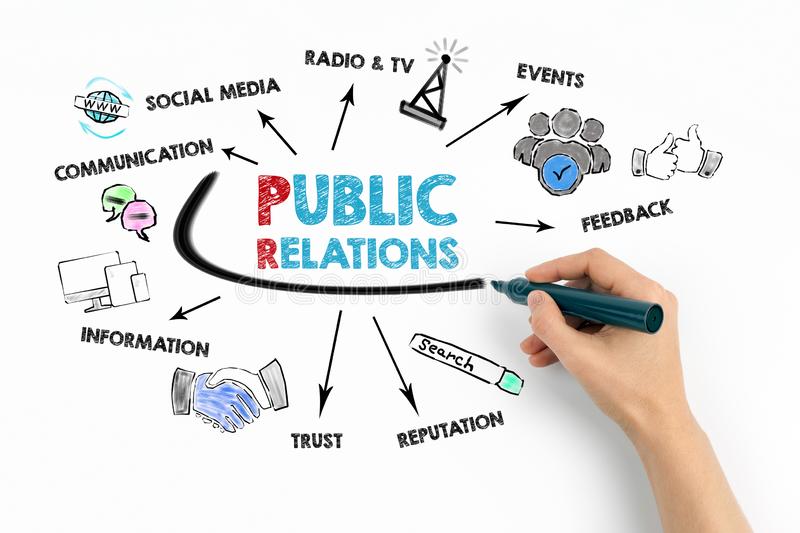
EXAMPLES OF PUBLIC RELATIONS (PR)
Public relations is the process of managing an organization’s communications with stakeholders and the media. This is typically seen as a core corporate function that supports governance, stakeholder relations, and compliance. Public relations is also used in marketing and market research. As well as in marketing products and brands, public relations is a critical component of managing corporate reputation. Investor Relations Publishing quarterly reports , press releases, and regulatory disclosures are examples of public relations. Response to analyst, media, and investor inquiries Government Relations Communications with the government regarding areas that are sensitive to compliance or which could represent regulatory risks. Supporting programs of sustainability and community engagement Managing communications with communities and non-profits.
1.Investor Relations:
Investor Relations (IR) combines finance, communication, and marketing to effectively manage the flow of information between a public company, its investors, and its stakeholders.
As investors are essential to a company’s success and growth, it is imperative that companies maintain strong, transparent relationships with them. The investor relations department can assist companies in managing these relationships.
2.Publishing quarterly report:
A publishing quarterly report is an international forum for the dissemination of peer-reviewed original papers with significant research and analyses on all aspects of the publishing business.Journal of Publishing Science examines the development, production, distribution, and marketing of books, magazines, journals, and online information services in relation to the social, political, economic, and technological conditions affecting publishing.
Its comprehensive coverage reveals how different sectors of the industry operate, from editorial decision-making to order processing. It covers product development, marketing, finance, as well as print and online distribution, as well as the relationship between publishing activities and the publishing industry’s constituencies among industry, government, and consumers. The journal publishes scholarly articles, research reports, review papers, essays, memoirs, statistics, letters, notes, and book reviews.
3.Press releases and regulatory disclosures:
Public relations (PR) departments in companies often handle press releases to inform the public about something of significance. Press releases are often distributed by the company’s public relations department. Companies issue press releases, which can be disseminated to a wider audience through the use of a newswire service, in order to announce, among other things, new products, quarterly earnings reports, mergers, and other significant developments.
Press releases are created by a company and are not the result of independent journalistic research. As a result, press releases can have some bias or subjective interpretation that investors and analysts should consider. Nowadays, it is sometimes difficult to distinguish between a press release and an article in a news publication. The best way to identify the source is to take a look at the first few words of the article. This will clarify the company or organization behind the story.
Press coverage is primarily provided by Business Wire and PR Newswire (PRN). BusinessWire is a global leader in press release distribution and regulatory disclosure. Public and investor relations professionals use the service to deliver their news to target audiences.
A newswire service publishes approximately 500 to 1,000 press releases a day across a variety of industries, as well as offering public relations support. These include a wide range of communication tools tailored to investor relations (IR), company news, press releases, and disclosure requirements. This includes investment vehicles, accounting and compliance, regulatory news, earnings and dividends, and the banking industry. This includes financial services, science and technology, and public policy.
4.Government Relations:
The Government Relations department of public relations is concerned with how an organization interacts with the government and its different divisions and officials. This area of public relations contributes to building relationships and positive interactions between an organization and government officials. Following this line of thinking, it is clear that Government Relations relies heavily on communicating regulatory issues, having one-on-one conversations with government representatives or bureaucrats, and lobbying for an organization or group.
5.Community relations:
Community relations refers, by definition, to the various methods a company uses in order to establish and sustain a mutually beneficial relationship with the community in which they operate. The fundamental principle of community relations is that when a business accepts its role and responsibility as a good corporate citizen and takes an active interest in the well-being of its local community, it gains a number of long-term benefits in terms of community support, loyalty, and goodwill.
A comprehensive and strategic community relations program can help virtually any organization – whether large or small, for-profit or nonprofit – achieve increased visibility as well as many other benefits.
6.Media Relations:
Managing and maintaining relationships with media organizations and individuals. Generating publicity by serving as a source for media content. Serving as a source of media content that generates publicity. Media Production Creating content, such as promotional videos, to achieve communications goals in areas such as investor relations and brand awareness.
Managing customer feedback and addressing customer complaints and inquiries with customer service. Engaging customers in product development and innovation Marketing Communications Leveraging communication channels and media relationships to generate demand for products and brand awareness.
7.Media production:
A media production major is an art form that combines film and sound to tell a story visually. Students in the program acquire the skills of shooting, producing, and editing video, and learn the basics of lighting and sound. The visual content they produce is broadcast on television, published on blogs, shared on podcasts, and/or posted on social media.
The profile of a successful media production graduate should include an understanding of computers, cameras, and other technical equipment, strong writing and speaking skills, analytical and creative abilities, and management skills.
8.Customer relations:
A company’s customer relations include methods of engaging with its customers and enhancing the customer experience. This includes providing answers to short-term roadblocks as well as proactively developing long-term solutions.
The development of a great product is one of the biggest challenges that a company can face and one of the biggest predictors of success. But strong customer relationships are what will really determine the success of a business.
Today’s consumers have a greater influence on the industry than ever before, which means they care about more than just the product that you’re selling them. Instead, they care about how you’re selling it, and what happens to the product after it has been sold to them.
9.Marketing communication:
Marketing communication (MarCom) is a complex and crucial element in any company’s marketing campaign. MarCom refers to the messages and mediums used to communicate with the market.
The development of a great product is one of the biggest challenges that a business can face and one of the biggest predictors of success. However, it is the relationship with your customers that will determine the success of your business.
10.Influencer:
The concept of influencer marketing is actually very straightforward. You identify influencers that are popular among your target audience, and they promote your products or services for a fee.
In influencer marketing, there’s usually either a social media component or content marketing component, or even both together. One of the most common ways in which influencers will promote your brand is through their own social media account. In content marketing, an influencer might create content that markets your business, or you might do it on behalf of the influencer.
11.Social media:
Marketing via social media and social networks is called social media marketing (SMM). Through social media marketing, companies are able to engage with existing customers and reach new ones while promoting their desired culture, tone, or mission. The use of data analytics in social media marketing allows marketers to monitor the effectiveness of their campaigns.
12.Internal communication:
An organization’s internal communication consists of various channels (up and down) through which information is shared, as well as lateral communication that helps promote the organization’s objectives. The company shares communication in various formats (verbal, written, and digital) both internally and externally.
13.Event industry:
The job fair, festival, or business conference you recently attended was planned and managed by someone in the event industry. Also known as event management and event planning, the event industry includes both individual party planners and large corporations that understand the intricacies and creativity required to throw a memorable and rewarding event.
14.Crisis communication:
Crisis communication refers to the dissemination of information by an organization in response to a crisis affecting customers and/or the organization’s reputation.
The idea is that the company’s reputation is perceived by everyone, regardless of whether you manage yours or not. Thus, it’s in a company’s best interests to have some say in the narrative. In addition, customer satisfaction increases when expectations are transparent. Despite the fact that crisis communication can be somewhat reactive, it helps to have a crisis communication plan in place before you need to use it so that your team members will have an easier time.
15.Strategic communication:
Public relations (PR) professionals are responsible for developing a media messaging strategy that is consistent with an organization’s overarching marketing and communications goals.
The industry refers to this as a “strategic communication” plan, which requires PR managers to ensure media coverage and publicity promote their organization’s overall strategic goals. The public relations manager should become actively involved in all communication channels within their organization.
16.Public affairs:
Generally, public affairs refers to an organization’s relationships with stakeholders. People or groups with an interest in the organisation’s affairs include politicians (MPs, MSPs, AMs, MLAs, MEPs), civil servants, customers and local communities, clients, shareholders, trade associations, think tanks, business groups, charities, unions, and the media.
A public affairs practitioner engages stakeholders in order to explain organisational views on public policy issues, assisting policy makers and legislators in amending or establishing more effective policies and legislation. The organization receives statistical and factual data from them and advocates for issues that may have a negative impact on the organisation’s ability to operate.
17.Online and social media communications:
The social media revolution has taken over the business scene, advertising industry and education sector. It has changed the way people communicate and has become an integral part of their daily lives. For example, WhatsApp has redefined IMs (instant messaging) and taken it to a whole new level. Today, you can text anyone across the globe as long as you have an internet connection. In addition to WhatsApp, Facebook, Twitter, LinkedIn and Instagram have also been instrumental in this transformation. The importance of social media in communication is a constant issue of discussion.
Information and awareness about what’s going on around the world are now available to people who previously could not hear about it. Online communication has helped increase awareness of the situation in other parts of the globe.




